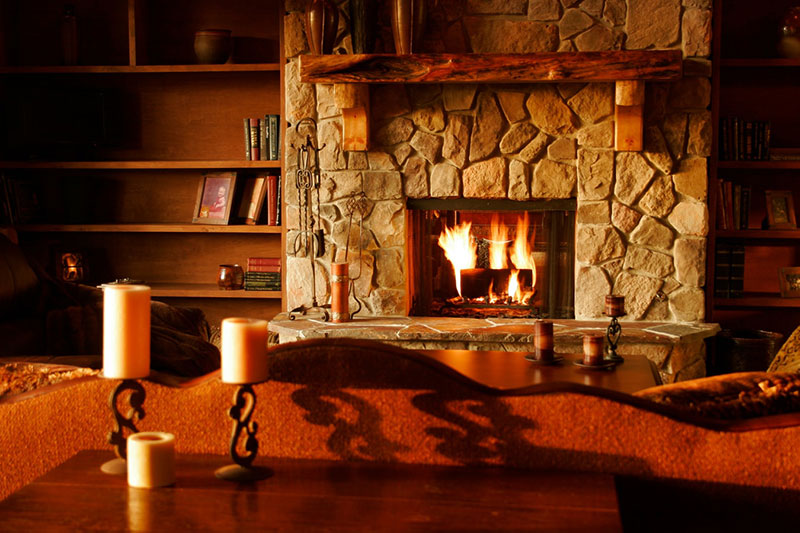Advertisement
A fireplace isn’t only a great home feature that adds more character and beauty to your living area. But it also provides you with a comfortable, warm and peaceful atmosphere in the cold winter months. The warmth and the beauty that a natural wood-burning fireplace offers brings all the family members together at night.
In order to get the best and most effective usage out of your fireplace, it’s critical to keep it in the best condition by taking the right maintenance measures. Not only will it save you both money and time, but it’ll also continue to provide your and your family members with comfort for the years to come.
In this article, we’ll discuss the best practices that you can follow to maintain your home’s wood-burning fireplace. So, without any further ado, let’s jump into it.
1. Vacuuming the Ash Away and Cleaning the Interior
The first and probably the most important tip for maintaining your fireplace is to clean the interior of the fireplace and vacuum the ash away. Not only is it necessary for maintenance purposes, but it also improves your air intake. It’s important to keep in mind that like household dust and dirt, the fireplace ash produced by the burning wood contains severe allergens. Moreover, cleaning your fireplace with a vacuum will also mitigate the unwanted odors caused by burnt wood fibers and their smoke.
Another important factor to consider is to use a specialized fireplace vacuum. That’s because ash is different from household dirt and dust, and it can be transferred to your household vacuum’s motor. Moreover, the filter that a normal household vacuum comes with isn’t specialized, and ash can be released back into your home’s atmosphere. On the other hand, the fireplace vacuum comes with a specially designed filter that not only contains warm ash. But it also ensures that none of it reaches the vacuum’s motor or is released back to the house.
2. Cleaning the Chimney
Unlike gel and gas-powered fireplaces, a wood-burning fireplace along with heat produces an immense amount of smoke. Resultantly, creosote builds up on the inside that can lead to a chimney fire. That’s why cleaning the chimney is very important to get rid of the fireplace flue of dangerous creosote. You’ll need to clean the chimney from bottom to top in order to clear out all types of flammable debris. You can buy a decent chimney brush to do so, but if you’re concerned about safety or don’t have the right equipment, then don’t hesitate to call your nearest chimney cleaning specialists to do the job.
3. Use the Right Wood
Wood burning is both science and art at the same time. You must use the best wood-burning practices, and you must also be aware of the type of wood to burn. You can find multiple types of woods available in the market, both cheap and expensive. Bear in mind that it certainly doesn’t mean that the expensive wood will be better. We recommend you go with hardwood as it’s known to be the best wood type to use for your wood-burning fireplace.
Trees like ash, birch, and oak are also great options as they can burn longer and hotter as compared to other wood types. Moreover, they also come with less pitch and sap, which means they cause less creosote buildup, which makes these wood types easier to manage. Using softwood costs you less than hardwood, but usually, when it comes to burning, it’s not efficient.
4. Install a Glass Door
In order to ensure the safety and efficiency of your wood-burning fireplace and to make the maintenance process easy, it’s important to install a heat-proof glass door. Not only will it keep your room from the embers and sparks coming out of the hearth. But it’ll also keep your kids and pets from accidentally getting too close. More so, you’ll only need to use a paper towel or damp newspaper to maintain a heat-proof glass door. You can also use light sandpaper to remove tough buildup.
5. Frequent Inspection
It’s important to be proactive to perform inspections and troubleshoot every once in a while. It’ll allow you to find and resolve issues on the go that can snowball and lead to a much larger problem. In extreme cases, you might also need to replace the whole fireplace if it has gone beyond repair. Some of the most common symptoms of wood-burning fireplace issues that you should look for are as followed:
- If you observe spalling bricks, then it means that your aging masonry urgently needs a sealant. Delaying will eventually disintegrate the bricks of your fireplace.
- If you observe efflorescence (white stain in the chimney bricks caused by moisture) means that there is a leakage. It can damage your chimney a great deal over time and can also lead to mold infestation.
- Instead of going to the chimney, smoke is filling your room.
Other than performing DIY (Do it Yourself) inspection and maintenance, you should also consider hiring a professional once or twice a year to thoroughly inspect your fireplace. The best time for an annual inspection from a professional is right before winter. Not only will it allow you to prepare your wood-burning fireplace for the season. But it’ll also provide you with enough time to repair all the small and big problems (if any). Hiring a professional is very beneficial because there can be many things that you can skip while performing a DIY inspection. An experienced individual will inspect your fireplace from an expert’s perspective to make appropriate recommendations.
Maintaining your fireplace properly is a great way to keep it effective and efficient for a long period of time. It also keeps the atmosphere of your home clean and free from all potential hazards that burning wood can cause. You should practice these five important tips to keep yourself from fireplace-related issues.

